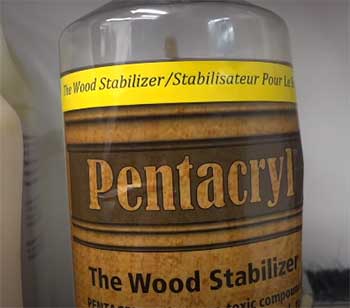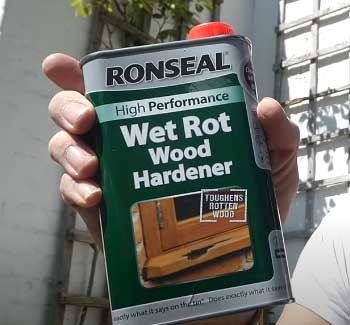Working with wood is not easy because wood gets affected by temperature, moisture, and weather very quickly. To keep the wood safe from these, wood hardener and wood stabilizer are really necessary.
Wood stabilizer protects the wood from expanding and shrinking at any temperature, whereas wood hardener stops rot and damage.
Before applying wood hardener or wood stabilizer, you should know the difference between them and their benefits. In this article, we will discuss them thoroughly to clear all your confusion.
A Quick Comparison Table
Here’s a quick comparison table between the wood stabilizer and wood hardener for your better understanding-
| Specifications | Wood Stabilizer | Wood Hardener |
| Main Purpose | Sealing the wood to make them stable at any temperature | Preventing rots, damage |
| Application | Complicated | Easy |
| Cost | Costlier than wood hardener | Not expensive |
| Color variation | No color | Available in different colors |
| Duration for drying | Slower than wood hardener | Fast drying |
Key Differences Between Wood Stabilizer And Wood Hardener
In this part of the article, you will get to know about the major differences between these two and how these are beneficial for your project-
- Main Purpose

A wood hardener is a liquid mixture that dries quickly, penetrates deeply into the wood, seals the surface, and provides protection against factors like dampness.
It also offers protection against future decay.
So, it can be said that the purpose of a wood hardener is to protect the wood from rotting and harden the wood that is already rotten.
The wood may expand or shrink because of environmental changes in temperature and humidity.
When this occurs, water and moisture can easily seep into or out of the wood.
The outcome is that the wood could swell, wrinkle, or warp. These frequent changes in the wood make it difficult to work with.
The main purpose of a wood stabilizer is to stabilize the wood so that it does not go through any structural change.
- Cost Variation
We consciously or subconsciously compare the price of a product while buying. You might also compare the price of wood hardener with wood stabilizer.
A wood stabilizer is a bit more pricey than a wood hardener. The reason behind this is that wood stabilizer is mainly resin-based product such as epoxy resin. It will cost you almost $100 to $150 per gallon.
On the other hand, the wood hardener is mostly water-based, for example, PC PRODUCTS PC-Petrifier wood hardener. It will cost you $45 to $50 per gallon.
- Color Variation

Similar to paints, wood hardeners are available in a variety of colors. However, some wood hardeners are transparent also.
You should choose the color of the wood hardener according to the color of the wood and its surroundings.
In order to ensure that the colors match while applying wood fillers, you should try to select your hardener and filler at the same time.
You have no option for choosing the color of your wood stabilizer.
Wood stabilizers are always transparent.
- Application
The process of applying wood hardener and wood stabilizer is different. For applying wood hardener, all you need is a brush. But make sure the wood is clean enough before applying.
Using a wood stabilizer is more complicated. You need to put the wood in a vacuum chamber with a wood stabilizer. Epoxy resin wood stabilizer requires this process. However, some wood stabilizers can be applied with a brush also.
Frequently Asked Question (FAQ)
Wood hardeners and wood stabilizers are two different materials. When resin or wood hardener is injected into a piece of soft or rotting wood, the wood hardens and becomes stable. The wood can also be stabilized using additional materials like epoxy resin, thermosetting resin, and a vacuum chamber.
A wood hardener is a moisture-curing polymer solution with a solvent base. It is intended to penetrate deeply and harden decaying or decayed wood once fully dried. It also reinforces and strengthens the damaged wood.
Yes, a wood hardener strengthens the wood by deeply penetrating it. It hardens the wood from the inside and protects the wood from the side effects of moisture.
No, it does not discolor the wood nor does it remove the wood stain. However, you can choose a colored wood hardener to match with your wood color.
Final Words
Since the beginning of civilization, wood has been used to construct bridges, homes, ships, and other significant constructions.
In addition to being a sturdy and versatile building material, wood is also surprisingly sensitive and light. To strengthen damaged wood and lengthen its life, a variety of preservatives can be used.
Wood stabilizer versus wood hardener is the most common debate in the case of preservatives, and you can easily come to a decision by analyzing the condition of the wood and the type of your project.
